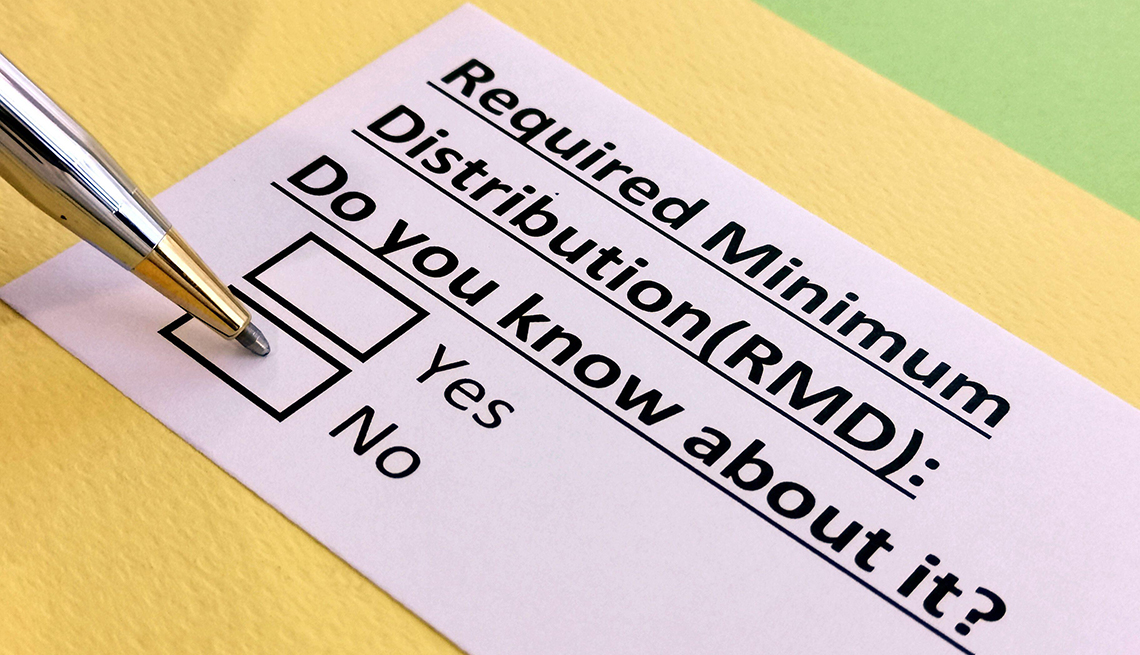Can I Put My RMD in a Roth IRA?
Ed Slott answers your questions about Individual Retirement Accounts, required minimum distributions and more
Q: Can I invest my RMD (required minimum distribution) into my Roth IRA?
Ask Ed Slott
Confused about IRAs, 401(k)s, Roths, taxes and more related to saving for retirement? Ed has the answers. Email your questions to IRAHelp@aarp.org.
A: Easy answer: No.
IRAs are subject to RMDs after reaching age 72. Whether you want to take the money or not, you must. However, those RMDs cannot be converted to Roth IRAs.
It’s logical to think that they can because the tax is being paid on the RMDs, so why not simply convert those funds to a Roth? But the law is clear that you cannot convert RMDs. The law is also clear that you must take the RMD prior to converting. Once your annual RMD is satisfied, then you can go ahead and convert any part of the balance in your IRA during the year.
Here’s something you can do, though. As long as you are already required to take these annual RMDs, why not use those funds to pay the tax to convert any part of the rest of your traditional IRA funds to a Roth IRA? This way you can reduce or eliminate those draining RMDs in the future.
Q: A friend forgot about an inherited IRA. He became the beneficiary about 18 years ago when his parents passed, at the age of 60. It appears that the company just kept reinvesting the distributions to the growth fund. If he withdraws his money from the account now, will he owe huge IRS penalties?
A: Unfortunately, your friend’s problem is a common one. Beneficiaries sometimes forget about inherited IRAs and often overlook the required minimum distribution rules. These rules do apply to inherited IRAs and if RMDs are missed, there is a 50 percent penalty on the amount that was not taken. Based on your question, it sounds like RMDs may have been missed over many years.
It is possible to get the penalties waived for these missed RMDs. To get a waiver from the IRS, the missed RMDs would need to be distributed and IRS Form 5329 filed for each year missed. A waiver of the penalties can be requested. The good news is that the IRS has generally been willing to grant these requests. Your friend should reach out to a knowledgeable tax adviser to help him with this process, especially calculating the many years of missed RMDs that will now all have to be taken in one year to get relief on the 50 percent penalty for each of those years.
AARP Membership -Join AARP for just $12 for your first year when you enroll in automatic renewal
Join today and save 25% off the standard annual rate. Get instant access to discounts, programs, services, and the information you need to benefit every area of your life.
Q: I have IRAs with several mutual fund companies. One has a large cash balance. Can I add the various RMDs required for this year and withdraw that total from the one IRA that has a cash balance? Do I have to notify the other institutions that I made the RMD? And should I have tax withheld from the RMD?
A: Yes. For IRAs you need to calculate the RMD for each one you own (but not Roth IRAs, since they are not subject to lifetime RMDs). Once you know the required amount (your total RMD amounts from all your IRAs), that RMD can be taken from any one or a combination of your IRAs. You do not have to account for them to other companies holding your IRAs, but it would be wise to make sure they know you have already satisfied the RMD from one of your other IRAs, so they do not distribute that RMD to you. The financial institutions do report that you are subject to RMDs, but as long as you satisfy your overall RMD amount, that will show on your tax return.
The tax withholding is a different issue. Yes, your RMDs will generally be fully taxable (unless your IRA balance includes nondeductible IRA contributions you made over the years — you report these on Form 8606). You can either pay that tax by making estimated tax payments throughout the year, or by having the tax withheld from your distribution. If that is not done, you will likely owe the tax when you file your tax return, but if you owe too much you could be subject to a penalty for not paying in the right amount of estimated taxes.
Q: I am 65. In 2017, I opened a Roth IRA. In 2021, I opened my second Roth IRA. I think starting from 2022, I can withdraw contributions, conversions and earnings from the two accounts tax-free and without penalty since I am over 59½ and my first account will be more than five years old. Is my understanding correct?
A: Yes, you are correct that beginning in 2022, any funds you withdraw from any of your Roth IRAs will be tax and penalty free, since you both satisfied the five-year holding requirement (which for you began on Jan. 1, 2017, the year you first opened a Roth IRA) and are over 59½ years old.
Ed Slott, CPA, is one of the nation’s top experts on retirement plans. For more than 30 years, he has educated both consumers and financial advisers on retirement tax-saving strategies. His most recent book is The New Retirement Savings Time Bomb (Penguin Random House, 2021). Visit www.IRAHelp.com to learn more.



